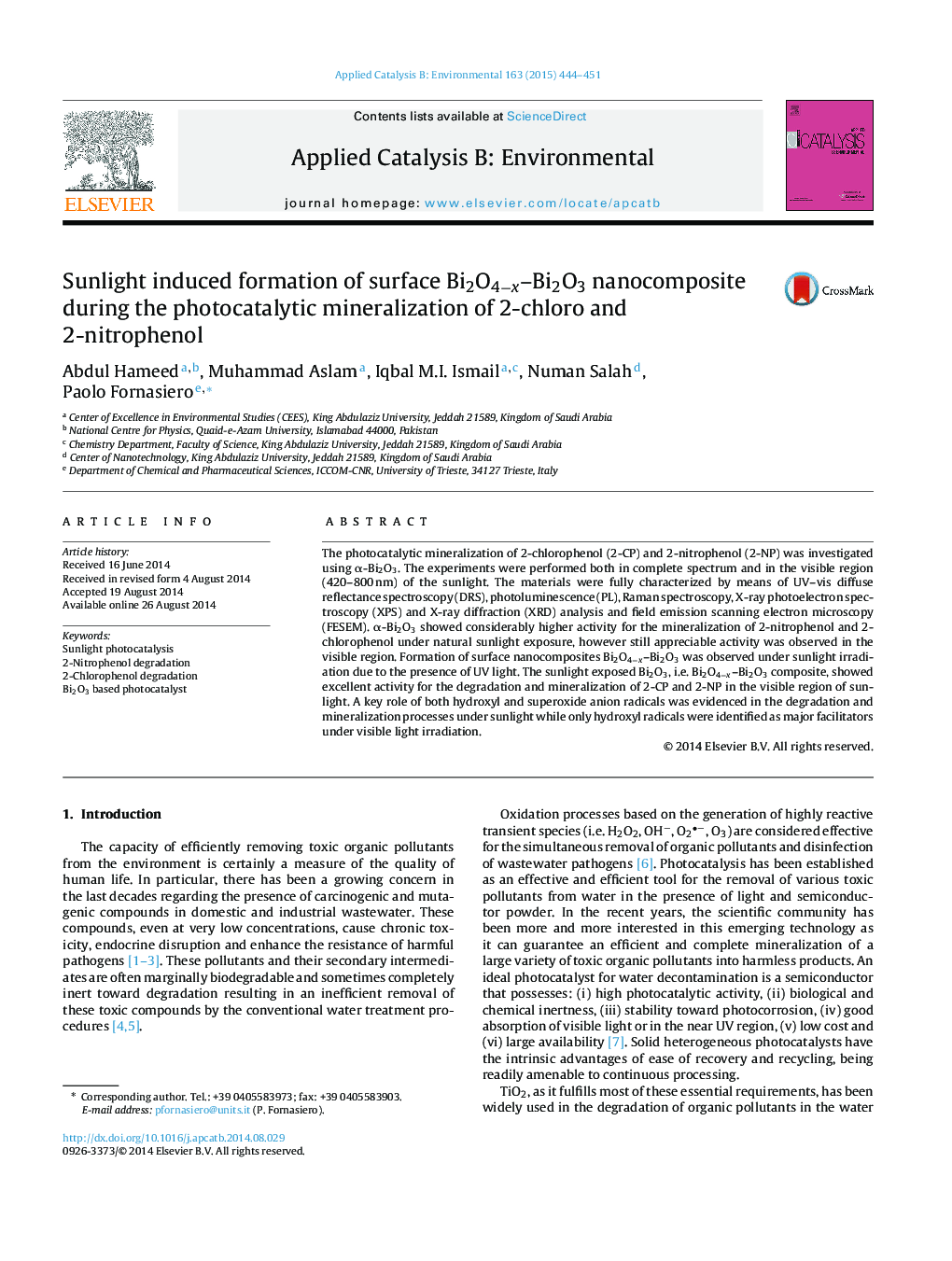| Article ID | Journal | Published Year | Pages | File Type |
|---|---|---|---|---|
| 44897 | Applied Catalysis B: Environmental | 2015 | 8 Pages |
•Alpha-Bi2O3 is active for photocatalytic mineralization of 2-chlorophenol and 2-nitrophenol.•The UV portion of sunlight induce Bi2O4−x–Bi2O3 nanocomposite formation.•Bi2O4−x–Bi2O3 nanocomposite has improved photocatalytic performances.
The photocatalytic mineralization of 2-chlorophenol (2-CP) and 2-nitrophenol (2-NP) was investigated using α-Bi2O3. The experiments were performed both in complete spectrum and in the visible region (420–800 nm) of the sunlight. The materials were fully characterized by means of UV–vis diffuse reflectance spectroscopy (DRS), photoluminescence (PL), Raman spectroscopy, X-ray photoelectron spectroscopy (XPS) and X-ray diffraction (XRD) analysis and field emission scanning electron microscopy (FESEM). α-Bi2O3 showed considerably higher activity for the mineralization of 2-nitrophenol and 2-chlorophenol under natural sunlight exposure, however still appreciable activity was observed in the visible region. Formation of surface nanocomposites Bi2O4−x–Bi2O3 was observed under sunlight irradiation due to the presence of UV light. The sunlight exposed Bi2O3, i.e. Bi2O4−x–Bi2O3 composite, showed excellent activity for the degradation and mineralization of 2-CP and 2-NP in the visible region of sunlight. A key role of both hydroxyl and superoxide anion radicals was evidenced in the degradation and mineralization processes under sunlight while only hydroxyl radicals were identified as major facilitators under visible light irradiation.
Graphical abstractFigure optionsDownload full-size imageDownload as PowerPoint slide
